Auxiliary Tender
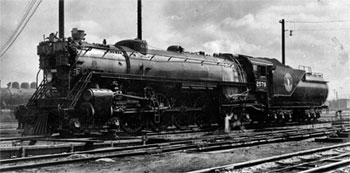
GN 2579 was another S2 class 4-8-4, seen here with its tender in Minneapolis.
July 19, 1950
Collection of Eric Larson
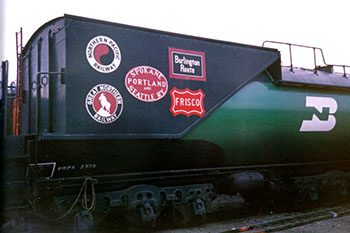
The PRPA painted the tender in a "BN Heritage" scheme,
acknowledging the railroad's generous donation.
Terry Kimzey photo
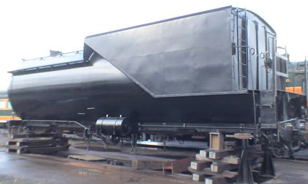
Tender up on blocks while its trucks and brakes are refurbished.
October 19, 2007
Photo by Terry Thompson
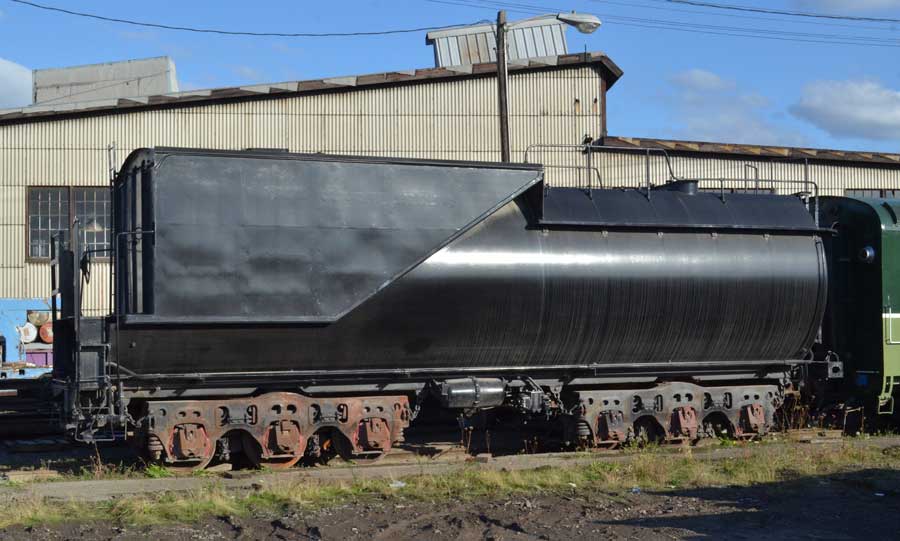
Tender back on its trucks waiting to move out from Brooklyn.
October 10, 2011
Photo by Terry Thompson
Back in the days of steam, railroads placed water and fueling towers along their lines to replenish their locomotives, spaced according to the demands of their trains. We're now well into the third generation of the diesel age, however, and nearly all of these structures have long since been removed. This means that steam locomotives operating out over the country's mainlines have to receive their water and fuel from sources never meant to supply the quantities needed, and it can take many hours for a large locomotive like the 700 to be topped up. To extend the 700's range and help alleviate this problem, the PRPA has acquired and is currently refurbishing an auxiliary tender to carry a supplemental supply of water.
The "aux" tender is of a "Vanderbilt" design with a cylindrical tank for water and a characteristic angled tank for oil. It was built by Baldwin for the Great Northern Railway's S2 Class Northerns. Specifications:
Weight of tender loaded: 326,900 lbs.
Water capacity: 17,000 gallons
Oil capacity: 5,800 gallons (originally, now a storage area)
Construction: welded (the S2 tenders were the only ones on the GN of all welded construction)
The tender's service and restoration history is as follows:
- 1930 - Entered service as the tender for Great Northern Railway's first S2 class Northern, the 2575.
- 1950s - GN retired 2575, removed the locomotive from the roster, and converted the tender to a fire protection car for use in the Klamath Falls area. The conversion included installation of a hand brake, modifications to the air brake system, replacement of the locomotive-tender drawbar with a standard coupler, and removal of the oil tank to make way for two new engine-driven pumps and shelving for the storage of a fire hose and other equipment. It was painted maintenance-of-way red.
- 1970+ - Renumbered to BN 973165 sometime after the 1970 merger of the GN, NP, CB&Q, and SP&S to form the Burlington Northern.
- 1985 - Retired from the BN roster and moved to Portland for scrapping.
- 1985 - Chris McLarney, former President of the PRPA, discovered the tender when the car was located in BN's Hoyt Street yard in the spring of 1985. He put in a donation request to the BN and W.W. Francis, Executive Vice-President, Seattle Region, agreed to have the tender donated to the PRPA. After the car was received by the PRPA, it was repainted in BN colors (black, white and green) and emblems from the GN, NP, SP&S, CB&Q and Frisco were placed on the sides. While preparing the tender for its new paint job in 1985 the PRPA crew discovered the paint from the original GN goat herald on the sides of the oil tank and the original locomotive number on the back of the water tank.
- 2007 - PRPA began the process of upgrading the tender's friction bearings to roller bearings, which are safer and are now required by host railroads. The project was soon discovered to be much larger than it first appeared because the trucks and brake rigging needed an extensive rehab. The PRPA guesses that the tender's trucks must have been swapped at some time, perhaps when the car was placed in maintenance-of-way service: a) all the S2s were converted to roller bearings on all axles during the 1940s and yet this one had friction bearings, and b) David H. Hickcox's book Great Northern Steam & Electric in Color states that the S2 class Northerns were the only GN steam locomotives to keep their original tenders from the time they were built until they were scrapped so we know that the tender is the original.
- 2010 - The tender's trucks were completely disassembled, repair welds were made, myriad replacement parts were fabricated, brake rigging was straightened, roller bearings were installed, and the trucks were reassembled. The tender was placed back on its trucks and made roadworthy in time to join the "exodus train" (along with the SP&S 700 and all the other historic railroad equipment leaving Brooklyn Yard) to the Oregon Rail Heritage Center.
Photos from the 2010 Rehab Work
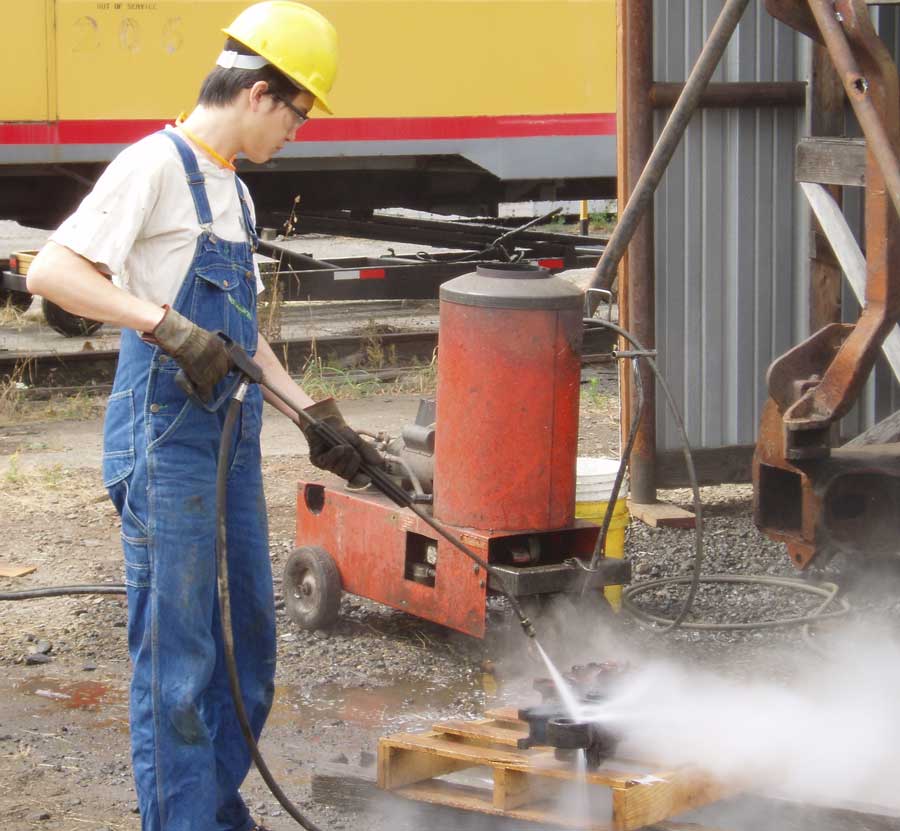
Washing the Brakes: The first step in rehabbing the trucks is to remove all the brakes and brake rigging (after carefully documenting how it all goes together, of course). This accomplished, it's time to clean up the brake rigging. Here, Chris Chen uses a pressure washer to get off the dirt and grime. All the brake parts--and there were many pallets of them--will be further scraped, ground, and wire brushed by hand. Most will be given new wear parts machined in-house, and some were bent straight or even re-manufactured entirely. Photo by Matt Baccitich. 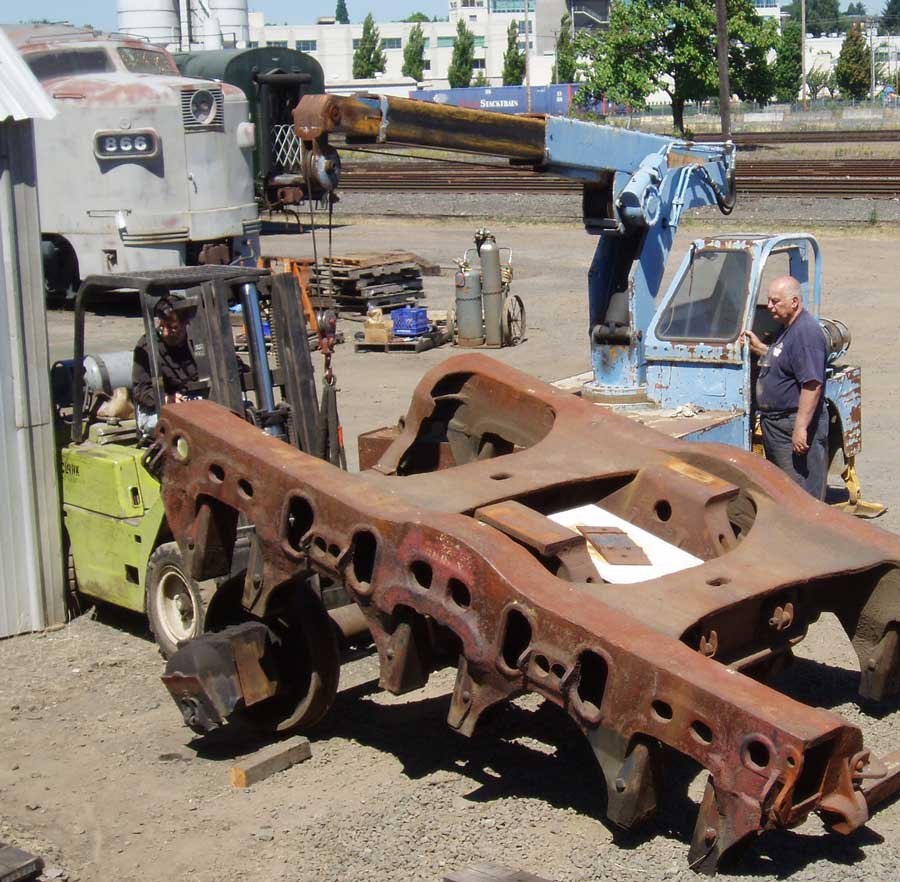
Truck Disassembly: The tender body has been jacked up and the trucks, now free to move, have been rolled off to the side. In this photo, Charlie Harrison pulls the last axel of truck #2 aside while Doyle McCormack uses the carry deck to lift the end of the truck. The machines are right at the limits of their capabilities. Photo by Matt Baccitich. |
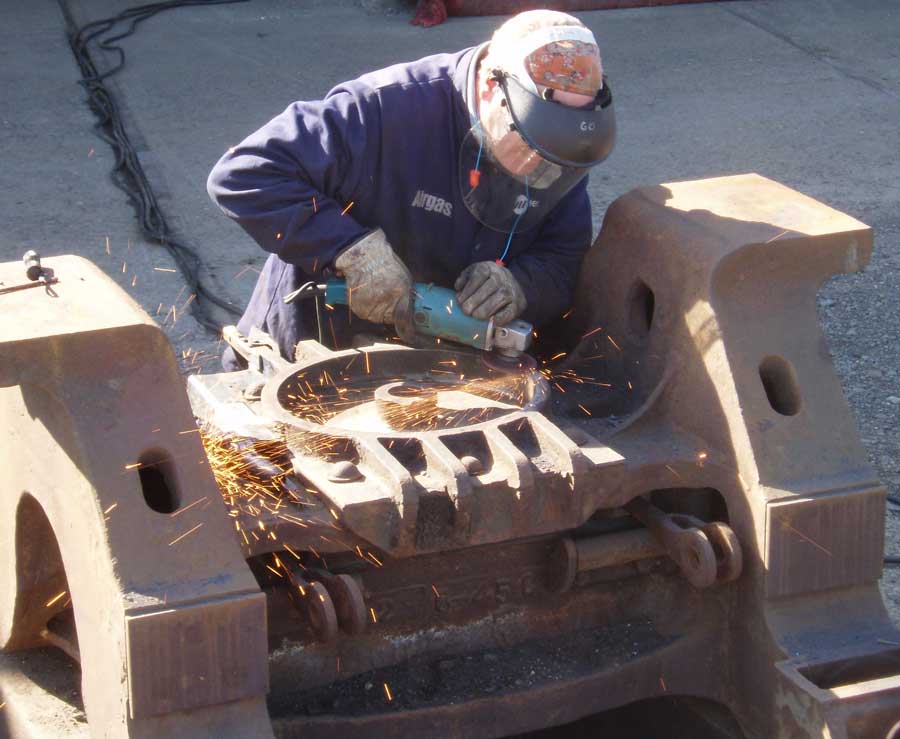
Bolster Repairs: The center bolster (the circular area Gary Oslund is grinding on in this photo) is the part of the truck upon which the tender body rests. These were found to be a bit battered so repair welds were made, which are here being cleaned up. Several areas of the truck bodies were repaired in the same way. Photo by Matt Baccitich. 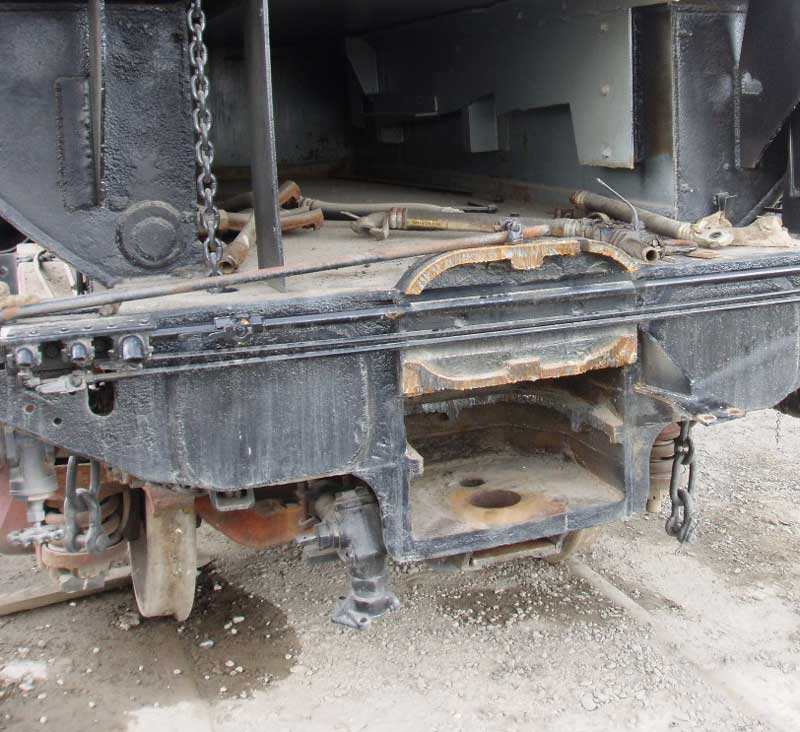
Front Coupler Pocket: Having finished the rehab of the brakes and trucks we found that the reassembled tender sat several inches higher than it had before. This raised the coupler too high, so we re-engineered the front pocket to correct. Given that the front pocket was originally designed to accommodate a draw bar rather than a coupler, this repositioning is not entirely unexpected. Photo by Matt Baccitich. |